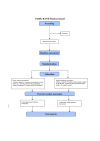Effects of a power strength training using elastic resistance exercises on the motor and non-motor symptoms in patients with Parkinson's disease H&Y 1-3: study protocol for a randomised controlled trial (PARK-BAND Study)
- PMID: 33046475
- PMCID: PMC7552828
- DOI: 10.1136/bmjopen-2020-039941
Effects of a power strength training using elastic resistance exercises on the motor and non-motor symptoms in patients with Parkinson's disease H&Y 1-3: study protocol for a randomised controlled trial (PARK-BAND Study)
Abstract
Introduction: Parkinson's disease (PD) is the second most common neurodegenerative disorder in Brazil. Physical activity is a complementary intervention in managing inherent declines associated with the disease like strength, balance, gait, and functionality and benefit health-related outcomes. Here, we report the PARK-BAND Study protocol, which aims to investigate potential benefits of power training using elastic devices in participants with PD. Our intervention will be provided in patients with PD using elastic devices like elastic bands and tubes. Therefore, we used the term Park from Parkinson's disease and band from elastic bands.
Methods and analysis: This randomised single-blind single-centre two-arm parallel, superiority trial will include 50 participants with PD attending the clinical setting. Those who meet the eligibility criteria and provide consent to participate will be randomised in a 1:1 ratio to either the exercise group, which will receive power training programme or the health education group, which will receive the education programme. Randomisation will be performed by permuted block randomisation with a block size of eight. Both groups will receive a 12-week intervention. The exercise group will have two sessions per week and the health education group will have one session per week. Changes from baseline in bradykinesia, as assessed by the Unified Parkinson's Disease Rating Scale motor examination subscore and physical functional performance, will be the primary outcomes. Secondary outcomes include other neurological, neurophysiological and physical variables, as well as the quality of life, depression, cognition, sleep quality and disturbances, assessed before and after interventions. We hypothesise that the exercise group will have greater improvement in primary and secondary outcomes than the health education group.
Ethics and dissemination: The study is approved by the Research Ethics Committee of Hospital Universitário Walter Cantidio and all participants will provide their written informed consent (register number 91075318.1.0000.5045).Trial results will be disseminated via peer reviewed journal articles and conference presentations, reports for organisations involved with PD and for participants.
Trial registration number: Registro Brasileiro de Ensaios Clínicos Registry (RBR-5w2sqt); Pre-results.
Keywords: Parkinson's disease; geriatric medicine; rehabilitation medicine.
© Author(s) (or their employer(s)) 2020. Re-use permitted under CC BY-NC. No commercial re-use. See rights and permissions. Published by BMJ.
Conflict of interest statement
Competing interests: None declared.
Figures
References
Publication types
MeSH terms
Associated data
LinkOut - more resources
Full Text Sources
Medical

